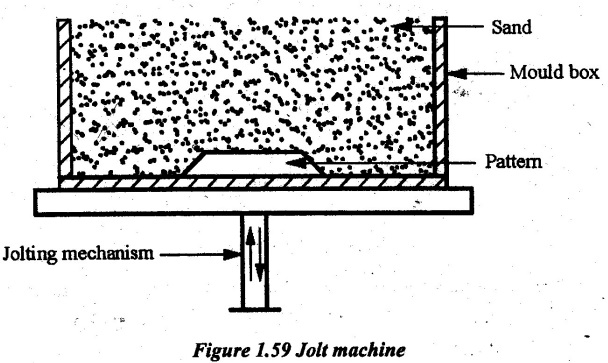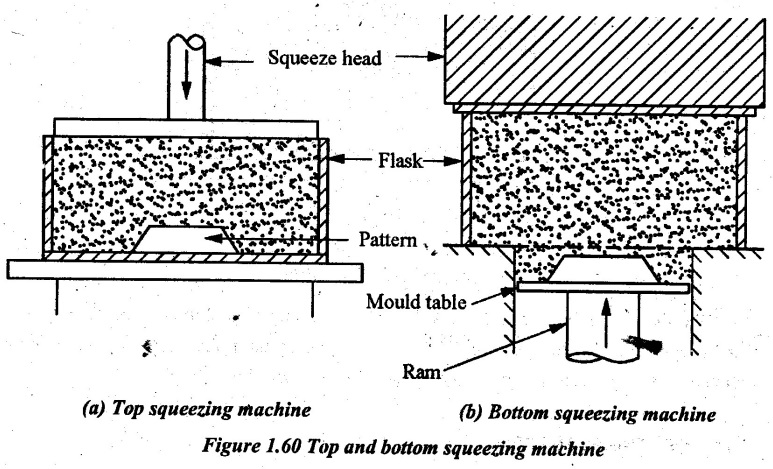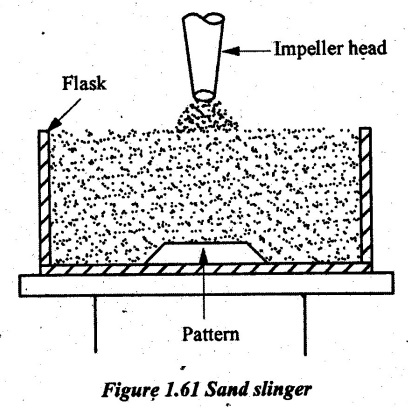Moulding machine is used for mass production. Since the hand moulding is a slow process, it can be only used for making few castings. For producing more castings, moulding is done by using moulding machines. It reduces the labours and increases the quality of the mould.
Moulding machines carry out the following operations:
1. Ramming the moulding sand
2. Rapping the pattern for easy removal
3. Removing the pattern from the sand
The following types of moulding machines are generally used
1. Jolting machine.
2. Squeezing machine.
3. Sand slinger.
1. Jolting Machine
Ingjolting machine, the pattern is placed in the flask / moulding box on the table. The flask is filled up with moulding sand. The table with moulding box is raised to 80 mm and suddenly dropped. The table will be operated pneumatically or hydraulically. The sudden dropping of table from a height makes the sand pack evenly around the pattern. This type of machine is mainly used for ramming horizontal surfaces on the mould. The operation is noisy because of jolting.

2. Squeezing Machine
In a squeezing machine, the moulding sand in the flask is squeezed between the machine table and a squeezer head. A top squeezer machine is shown in Figure 1.60 (a). The mould board is clamped on the table. The flask is placed on the mould board. The pattern is placed inside the flask. The sand is filled up and leveled. The table is raised by the table lift mechanism against the squeezer head. The platen enters the sand frame and packs the sand tightly. After squeezing the flask, the table comes down to the starting position.

The main limitation of this machine is that the sand is rammed mould on the top of the mould than the sand near the pattern.
3. Bottom Squeezer Machine
Here, the pattern is placed on the mould table. The mould table clamped on the ram. The flask is placed on a frame and filled with sand. The table with the pattern is raised up against the squeezer head [refer Figure 1.60 (b)]. Thus, the flask with the pattern is squeezed between squeezer head and table. Then the table returns to its original position.
4. Sand Slinger
Moulding process is performed by using a sand slinger as shown in Figure 1.61. In this process, the pattern is placed on a board. The flask is placed over it. Now, the slinger is operated. The slinger has an impeller which can be rotated with different speeds. When the impeller rotates, it throws a stream of sand at greater velocity into the flask. Hence, the sand is packed in the flask.

The slinger can be moved to pack the sand uniformly around the pattern. The density of sand is controlled by the speed of the impeller. In this method, the roaming will be uniform with good strength. It is used for large and medium size moulds.
No comments:
Post a Comment